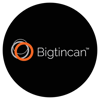With the general pressure to lower healthcare costs, and with increased competition from new market entrants, generic providers, and from head-to-head competitors, life sciences firms are having their operating and profit margins squeezed.
In addition, their customers’ requirements and preferences are changing rapidly. Buyers are more connected than ever, using mobile devices to gather information and do business anytime and anywhere. As is the case of other industries, the social, mobile and connected customer is disrupting the status quo in Life Sciences, making traditional business processes obsolete, and long-standing sales and marketing models increasingly ineffective. Following are brief descriptions of some of these changes and the challenges they are creating in the various areas of commercial operations.
Download the eBook: Life Sciences: Discover The Right Revenue Formula With Sales Enablement
Sales Challenges
For years, pharmaceutical and medical device sales reps have been dealing with shrinking availability among their customers. The growing lack of physician availability stems from economics and new healthcare business models, which have pressured doctors to see more patients. The Affordable Care Act, which is bringing millions of new patients into the U.S. healthcare system, has worsened the problem. As a result, there are many more ‘no see’ physicians today, doctors who have little to no time to spend with sales representatives. Mobile communications offer more possibilities. For many sales representatives, however, communicating with physicians via their smartphones or tablets presents another set of challenges.
Regulatory requirements are also creating hurdles for sales people. Federal and state regulations, and guidelines from industry associations such as PhRMA, set boundaries for how pharmaceutical and medical device sales reps can interact with customers. Compliance with these rules, including gift bans and mandated reporting of any financial incentives over $50 in value, have altered the sales landscape throughout the Life Sciences industry. Whether it is with key opinion leaders (KOLs) – physicians who influence other physicians – average doctors, administrators or any other decision makers, yesterday’s sales strategies and tactics are not only less effective, they’re also banned.
Due to these changes, Life Sciences sales personnel are having to find new and different ways to engage with their customers. To do that, they need to start with more effective pre-call planning and preparation so they can maximize their effectiveness in every customer meeting. To do that, they need better, more mobile-friendly sales training that gives them instant and reliable access to the most up-to- date materials. They also need tools that let them custom-tailor the messaging and materials they are delivering to specific customers, and do so while on the go. To maximize the time they can spend in the field, reps need to reduce the time they spend on administrative tasks. So integration and mobile access to CRM systems and other tools is a must. Lastly, sales management needs effective ways to capture the best practices of their top-performing reps, and propagate them across their entire sales force.
Customer Service Challenges
For the growing rosters of products, areas, and customers they need to cover, customer service and support functions are only getting more complex for Life Sciences companies. For example, the customer service team for a medical device manufacturer needs to orchestrate complex processes using information of varying types from multiple sources. These include technical support, repair scheduling and service contracts and warranties, and third-party vendors and suppliers. Field service managers need to effectively control, monitor, and track all the activities of each individual, team and department.
Today, service and support people have to pull information out of legacy systems or organizational silos, manually combine it in spreadsheets or other files, and then figure out with whom they need to share it, and how best to do so. That model too often results in low customer satisfaction, lost service revenues, and missed cross-sell and upsell opportunities. In other words, it ensures poor performance.
A smarter and more effective approach involves more automated content aggregation and updating, and more mobile-friendly ways of sharing information and communicating with customers. Unfortunately, many Life Sciences service and support teams lack these capabilities today.
Marketing Challenges
In addition to trying to stand out in a crowded and noisy market, Life Sciences marketers have regulatory responsibilities that are perhaps more burdensome than in any other industry. They must adhere to strict and complex federal and state regulations. For the many Life Sciences companies that do business internationally, the complexity of their regulatory requirements grows exponentially. Marketing teams must pay close attention to, and comply with, regulations covering promotional and marketing materials. Their materials must meet specific guidelines, and are regularly subjected to reviews, compliance checks, and audits by the FDA and other federal and state agencies.
For marketing people at Life Sciences firms, it seems that after checking off all of their regulatory and reporting requirements, they have little time left to do ‘real’ marketing. That is, the creative and strategic work of promoting their firms’ products in their target markets. Their regulatory responsibilities also leave them with less time to deal with ad hoc requests (usually from sales people) for custom-tailored collateral, or other, ‘one-off’ items.
Marketing teams also lack the tracking and analytics capabilities they need to tell which of the content pieces they produce are working in the field, and which ones are not. With this lack of visibility, marketers often produce materials that go unused by sales, wasting significant amounts of time and money. The visibility problem also means marketers have no effective way to show the impact their materials are having on sales pipeline development and ultimately, on revenue generation.
These and similar issues are hindering the effectiveness of commercial operations teams within many Life Sciences companies. In all customer-facing functions, including sales, marketing, field service and customer support, and in strategic areas including regulatory compliance, customer relations, and market development, there is an increasing need for more operational efficiency and effectiveness.
One thread that weaves through all of these areas is sales and service content. By embracing new, smarter, and more automated ways of producing and sharing content with customers, Life Science sales, marketing, and customer service teams can gain efficiencies and create real competitive advantage.
To overcome these challenges Bigtincan has developed the award winning sales enablement solution, Bigtincan Life Sciences (LS), providing Life Science professionals a comprehensive set of product capabilities, integrations and bundled services. Get a demo today to see what Bigtincan LS can do for your organization.


